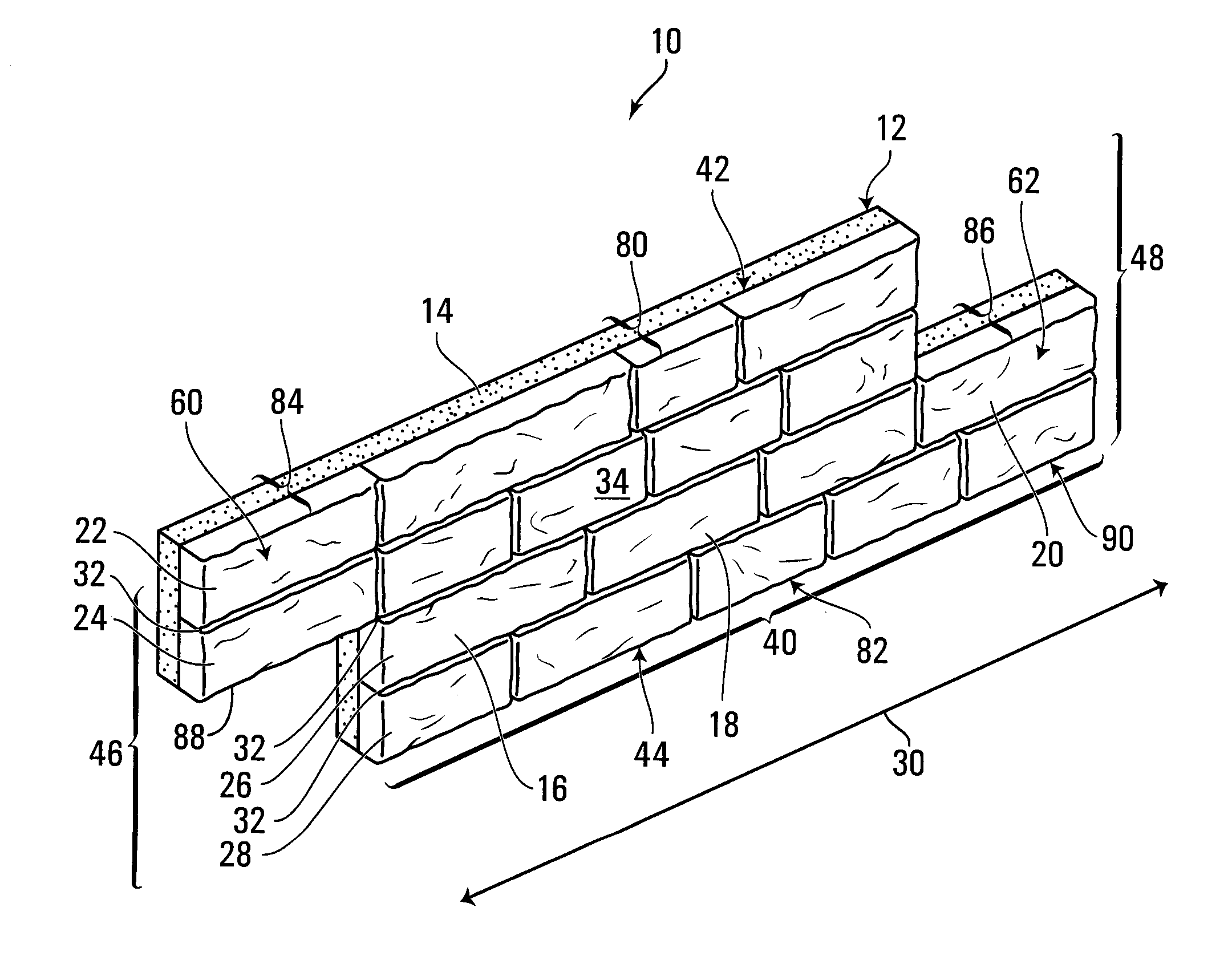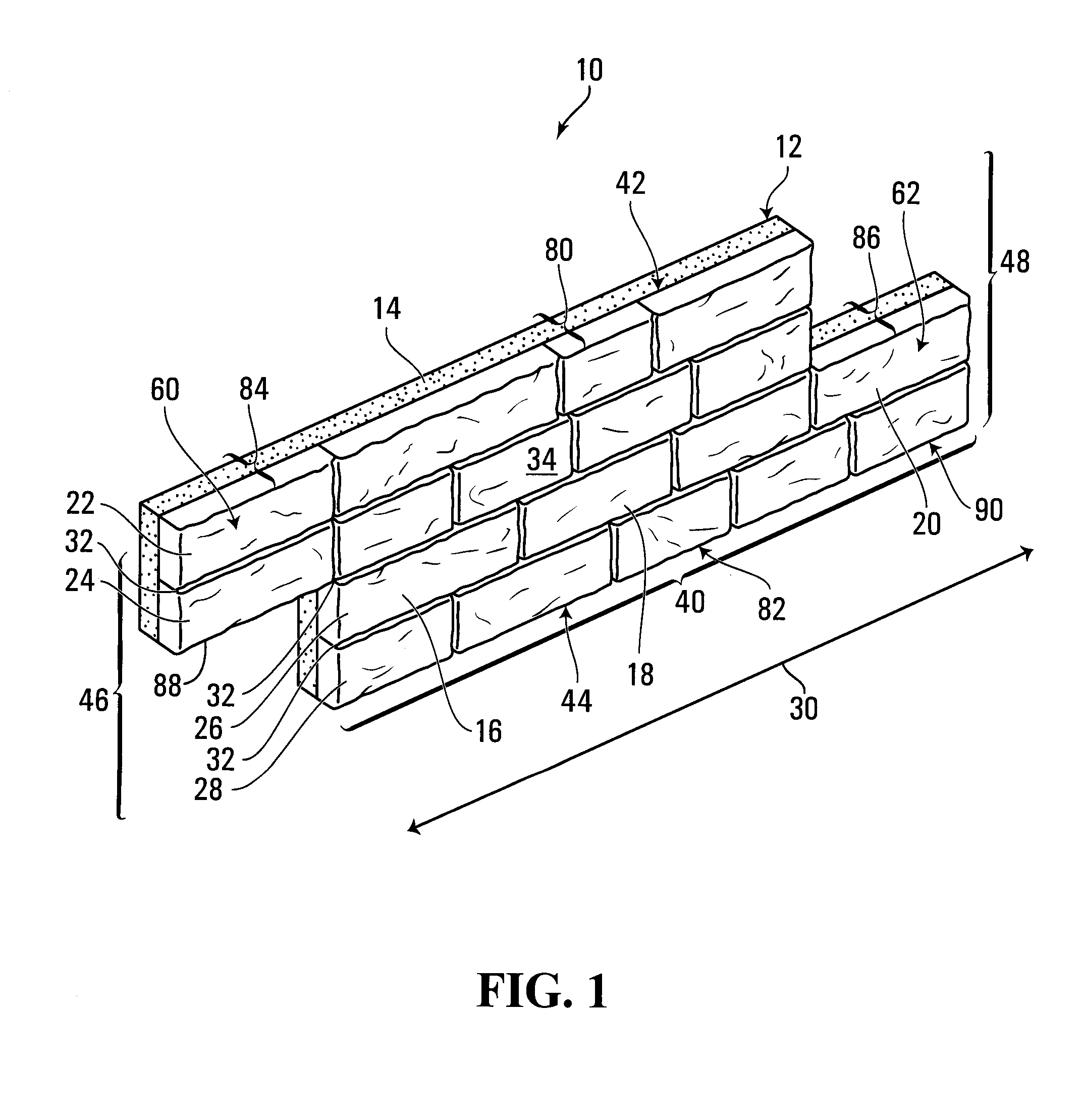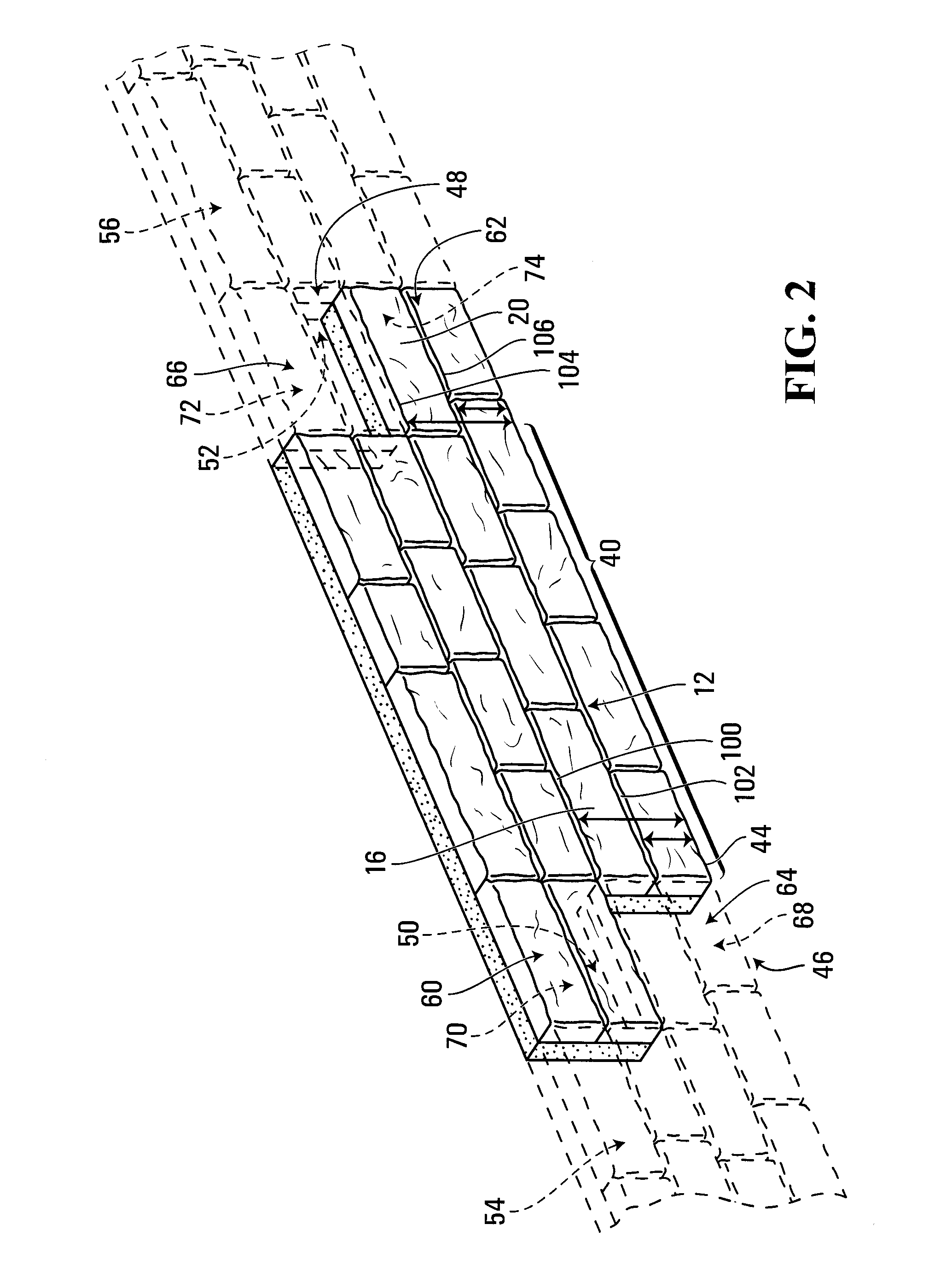Natural rock panel, natural rock veneer panel and panel support apparatus
- Summary
- Abstract
- Description
- Claims
- Application Information
AI Technical Summary
Benefits of technology
Problems solved by technology
Method used
Image
Examples
Embodiment Construction
[0094]Referring to FIG. 1, an architectural finish element operable to be placed adjacent similar architectural finish elements to form a finished surface on an architectural structure is shown generally at 10. The architectural finish element 10 is in the form of a panel and comprises a body 12 formed of a rock-based composite material comprising a low density solid particle additive 14 and a plurality of unitary real stone veneer elements, such as shown at 16, 18 and 20 for example, bonded to the body.
[0095]In this embodiment, the rock-based composite material forming the body 12 is comprised of Portland cement mixed with water and an aggregate comprised of pumice in a ratio of 1.5:1:2. In this embodiment, the veneer elements, such as shown at 16, 18 and 20 for example, may be bonded to the body 12 by casting the body adjacent the veneer elements.
[0096]The solid particle additive 14 may be recycled waste, non-toxic waste, post manufacturing waste, or post consumer waste, for examp...
PUM
 Login to View More
Login to View More Abstract
Description
Claims
Application Information
 Login to View More
Login to View More - R&D
- Intellectual Property
- Life Sciences
- Materials
- Tech Scout
- Unparalleled Data Quality
- Higher Quality Content
- 60% Fewer Hallucinations
Browse by: Latest US Patents, China's latest patents, Technical Efficacy Thesaurus, Application Domain, Technology Topic, Popular Technical Reports.
© 2025 PatSnap. All rights reserved.Legal|Privacy policy|Modern Slavery Act Transparency Statement|Sitemap|About US| Contact US: help@patsnap.com



